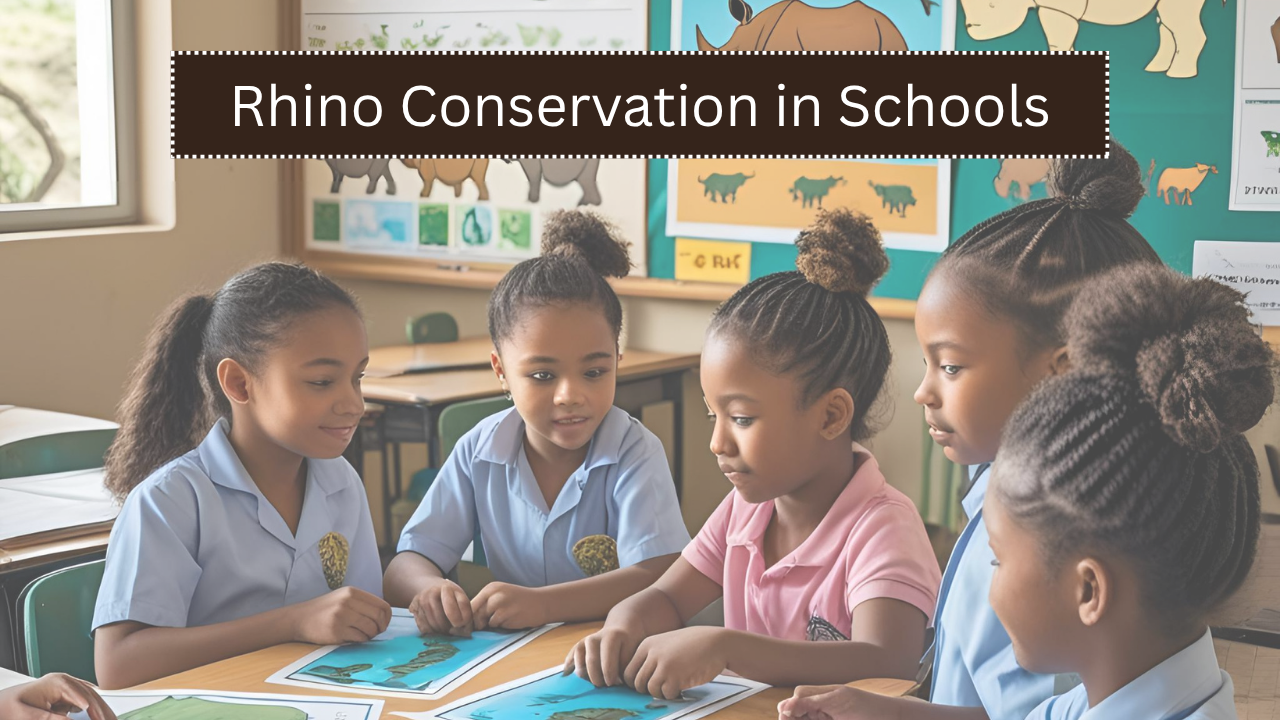Rhino conservation has become a critical subject in environmental education, especially with the ongoing threats of poaching and habitat destruction. Schools across the globe are beginning to realize that fostering awareness at a young age helps shape future stewards of wildlife. Conservation efforts that reach classrooms not only inform students but empower them to take part in meaningful action. Education rooted in real-world issues such as rhino protection offers a gateway to deeper ecological understanding and civic responsibility.
Importance of Rhino Conservation Education
- Biodiversity Awareness: Rhino conservation introduces students to the broader concept of biodiversity, encouraging understanding of how species interdependence supports ecosystems.
- Crisis Understanding: Students learn about the causes behind rhino population decline—primarily poaching for horns and habitat loss due to human expansion.
- Ethical Development: Conservation lessons help cultivate empathy, ethical reasoning, and global citizenship in young minds.
- Career Inspiration: Exposure to conservation-related topics can spark interest in careers in environmental science, zoology, or activism.
Classroom Methods for Teaching Rhino Conservation
Schools integrate rhino conservation into the curriculum using various engaging approaches:
- Interactive Storytelling: Teachers use narratives about real rhinos or conservationists to make lessons emotionally engaging.
- Field Visits and Virtual Tours: Excursions to wildlife sanctuaries or online virtual safaris offer a firsthand understanding of rhinos in natural habitats.
- Art and Poster Campaigns: Students create awareness posters, paintings, and digital content to spread conservation messages in school and community spaces.
- Simulation Games: Classroom games simulate conservation challenges, enabling students to experience decision-making in real-world contexts.
- Science Projects: Research-based projects encourage students to gather data on rhino species, threats, and protection strategies.
Age-Appropriate Activities for Conservation Learning
| Age Group | Learning Activity | Key Outcome |
|---|---|---|
| Primary (6–10 years) | Drawing rhinos and listening to animal stories | Builds affection for rhinos |
| Middle (11–13 years) | Watching documentaries and engaging in quizzes | Enhances factual knowledge |
| Secondary (14–16 years) | Debates on poaching laws and eco-activism projects | Develops critical thinking and advocacy |
| Senior (17+ years) | Writing essays or organizing school-wide campaigns | Cultivates leadership and policy awareness |
Collaborations Between Schools and Wildlife Organizations
Effective conservation education involves collaboration with conservationists and NGOs. Examples include:
- Guest Lectures from Wildlife Experts: Conservationists share field experiences, offering authentic insight and inspiration.
- Workshops by NGOs like Save the Rhino International: Partner organizations provide structured learning modules aligned with conservation goals.
- Student Participation in Citizen Science Projects: Learners contribute to data collection on rhino sightings or related species research.
- Adoption Programs: Classes “adopt” a rhino through donation-based programs and receive regular updates.
Role of Technology in Conservation Education
Technology makes rhino education interactive and globally connected:
- Virtual Reality Experiences: Students explore rhino habitats through immersive 360° experiences.
- Mobile Apps for Wildlife Tracking: Apps like “Wildlife Witness” allow students to report illegal wildlife trade.
- Online Quizzes and Games: Gamified apps test and reinforce rhino knowledge in fun ways.
- Social Media Campaigns: Students create awareness by sharing conservation messages on platforms like Instagram or X (formerly Twitter).
Integration in Different Subjects
| Subject | Integration Method |
|---|---|
| Science | Studying rhino anatomy, habitats, and the food web |
| Geography | Mapping rhino distribution and analyzing habitat patterns |
| Civics | Debating wildlife protection laws and human responsibility |
| English | Writing persuasive essays or letters to officials advocating for wildlife protection |
| Art | Creating rhino-themed art projects and awareness materials |
Challenges in Implementing Rhino Conservation in Schools
- Curriculum Limitations: Overloaded syllabi can leave little room for additional conservation topics.
- Lack of Resources: Rural or underfunded schools may lack internet access or educational materials.
- Limited Teacher Training: Teachers may feel unprepared to lead discussions on complex conservation issues.
- Low Priority in Policy: National education policies may not prioritize wildlife education sufficiently.
Solutions and Strategic Approaches
- Incorporating into National Syllabi: Governments can mandate environmental education modules, including species-specific topics like rhino conservation.
- Teacher Training Workshops: Professional development programs prepare teachers to handle conservation subjects confidently.
- Accessible Learning Kits: NGOs and governments can distribute affordable teaching kits with books, games, and activity guides.
- Community Engagement: Schools can involve parents and local leaders in conservation efforts to extend impact beyond classrooms.
Success Stories from Around the World
| Country | Program Name | Impact |
|---|---|---|
| South Africa | Rhino Art | Over 300,000 children created rhino art to spread awareness |
| India | Kids for Tigers (with rhino modules) | Fostered wildlife advocacy in over 500 schools |
| United Kingdom | Born Free Education Program | Delivered wildlife lessons, including rhino conservation, to schools worldwide |
| Kenya | Eco-Schools Kenya | Integrated rhino protection projects into environmental clubs |
Benefits Beyond Conservation
Teaching rhino conservation extends benefits beyond saving one species:
- Fosters Environmental Stewardship: Students are more likely to adopt eco-friendly behaviors long-term.
- Encourages Global Awareness: Youth gain perspective on global challenges like biodiversity loss and climate change.
- Strengthens Empathy and Ethics: Learning about the suffering caused by poaching fosters moral development.
- Improves Critical Thinking: Real-world challenges inspire students to explore problem-solving beyond textbooks.
The Bottom Line
Rhino conservation education in schools creates informed, compassionate individuals ready to tackle environmental challenges. Classrooms that embrace wildlife issues promote both academic learning and responsible citizenship. Investing in young minds today offers the strongest hope for preserving endangered species like rhinos for generations to come.

